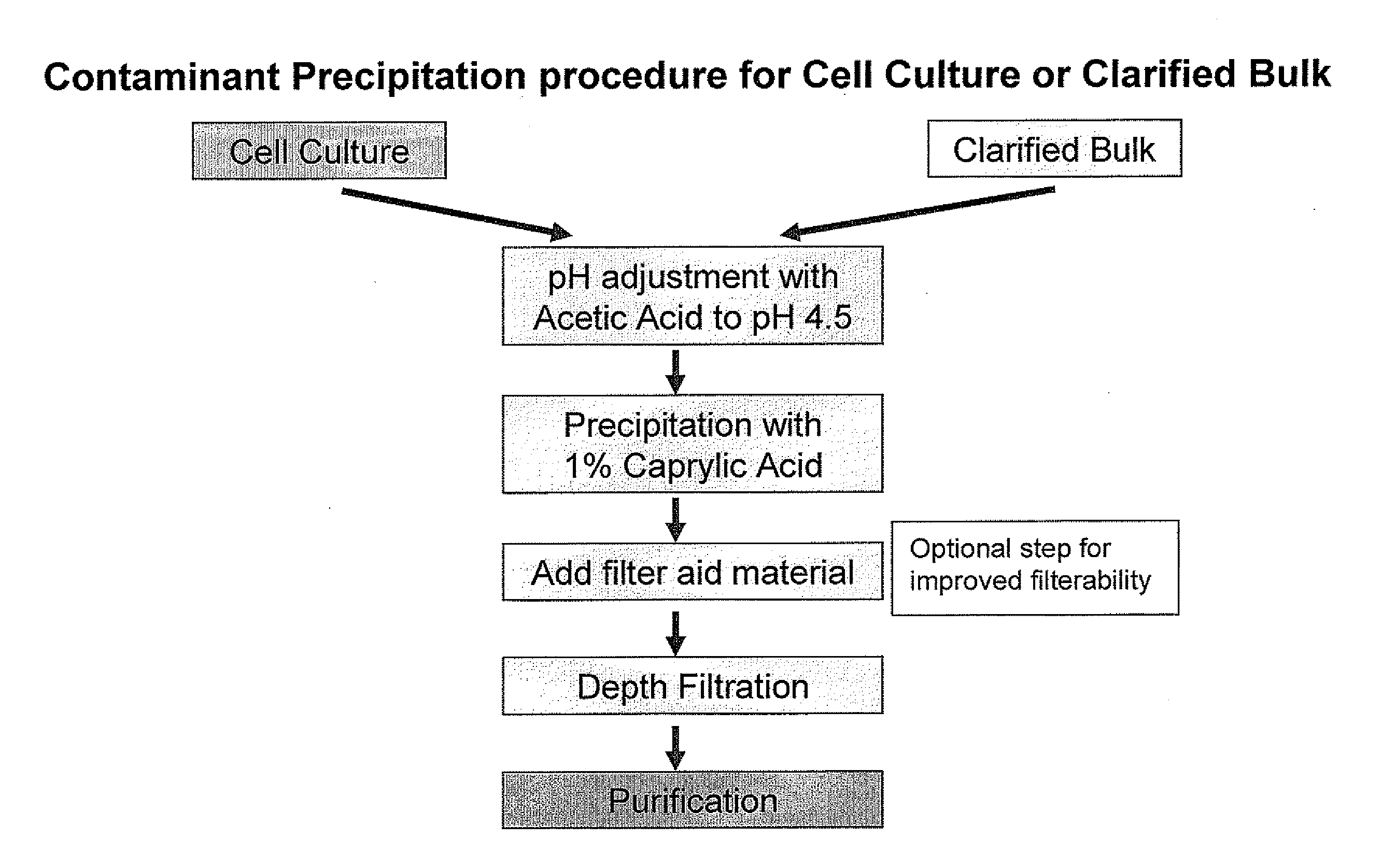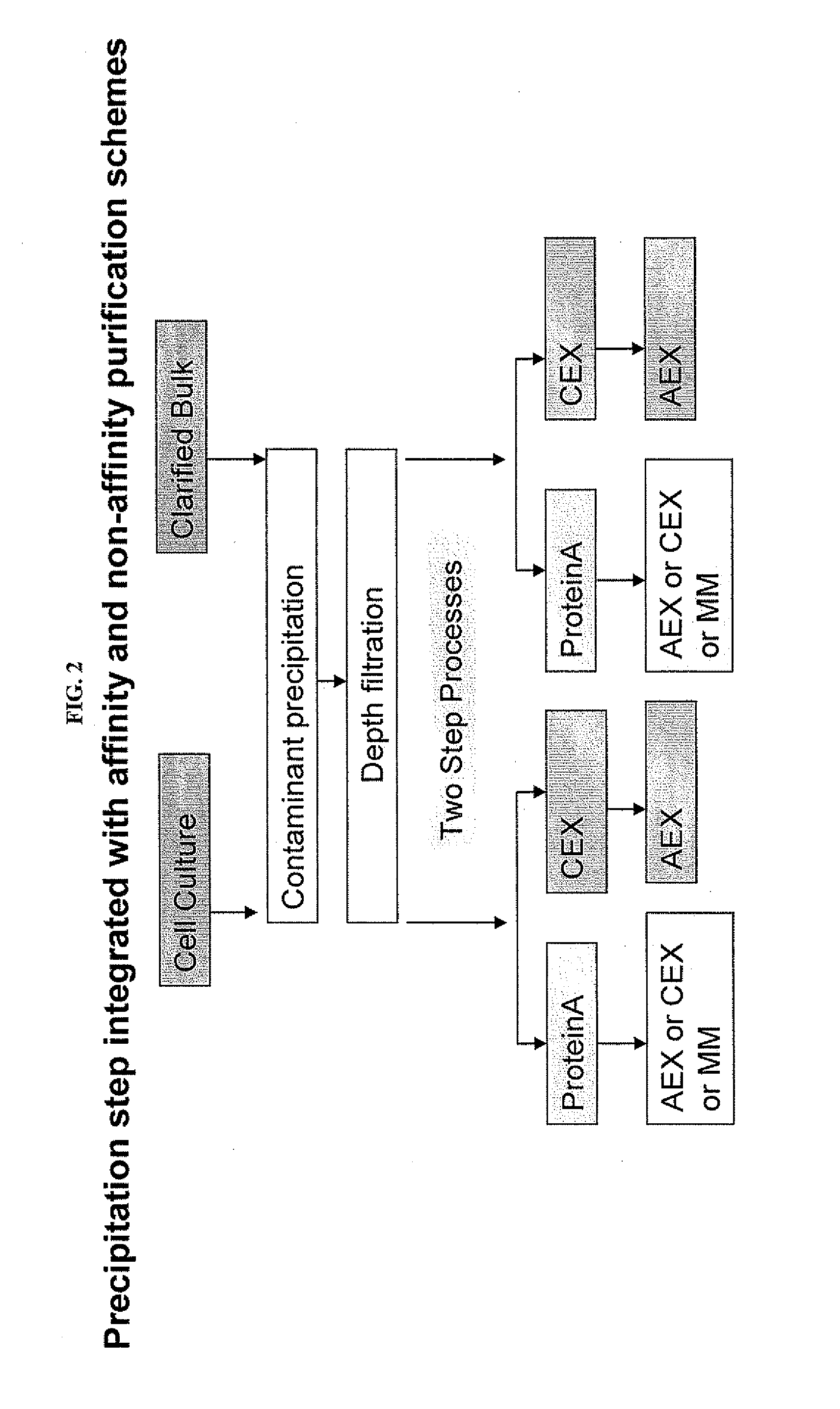Protein purification by caprylic acid (octanoic acid) precipitation
a technology of octanoic acid and protein, applied in the field of biopharmaceutical industry, can solve the problems of protein a, limited life cycle, high cost, etc., and achieve the effect of efficient purification
- Summary
- Abstract
- Description
- Claims
- Application Information
AI Technical Summary
Benefits of technology
Problems solved by technology
Method used
Image
Examples
example 1
Contaminant Precipitation Using Caprylic Acid
[0062]This example demonstrates the effectiveness of caprylic acid precipitation at removing host cell proteins from cell culture or clarified bulk (CB) samples. Optimal precipitation conditions for a particular sample can be determined empirically by varying the caprylic acid concentration, pH and mixing time and determining the antibody and host cell protein level remaining in the supernatant after caprylic acid-induced precipitation.
[0063]To determine the optimal caprylic acid concentration for selective precipitation of contaminants, different final concentrations of caprylic acid were added after pH was adjusted to 4.5 to a series of identical clarified bulk samples comprising antibody-expressing CHO cells. The samples were mixed continuously for 2 hours to form a precipitate. The precipitate was then removed and the amount of remaining antibody and host cell protein quantified. Representative precipitation curves are depicted in FIG...
example 2
Integration of Caprylic Acid Precipitation with Cation-Exchange Chromatography
[0068]This example demonstrates the compatibility of mixtures purified using caprylic acid precipitation for direct use in downstream chromatography steps. A CHO cell culture was treated with caprylic acid to precipitate host cell contaminants and the resultant contaminant precipitate was removed. The caprylic acid-treated mixture was then subject to CEX using two different high-capacity CEX resins. As shown in Table 3, for both CEX resins, the final, purified antibody had a purity greater than 99% and a CHOP content of less than 10 ng / mg of antibody.
Table 3. Integration of Caprylic Acid Precipitation with Cation-Exchange Chromatography.
[0069]90-100 mg / mL resin binding capacity was achieved. Caprylic acid-treated cell culture mixture diluted prior to column loading.
Load CHOPElution CHOPElution purityRecoveryResin(ng / mg)(ng / mg)(%)(%)GigaCap S~10099.694GigaCap CM~10099.895
PUM
| Property | Measurement | Unit |
|---|---|---|
| volume | aaaaa | aaaaa |
| volume | aaaaa | aaaaa |
| volume | aaaaa | aaaaa |
Abstract
Description
Claims
Application Information
 Login to View More
Login to View More - R&D
- Intellectual Property
- Life Sciences
- Materials
- Tech Scout
- Unparalleled Data Quality
- Higher Quality Content
- 60% Fewer Hallucinations
Browse by: Latest US Patents, China's latest patents, Technical Efficacy Thesaurus, Application Domain, Technology Topic, Popular Technical Reports.
© 2025 PatSnap. All rights reserved.Legal|Privacy policy|Modern Slavery Act Transparency Statement|Sitemap|About US| Contact US: help@patsnap.com



